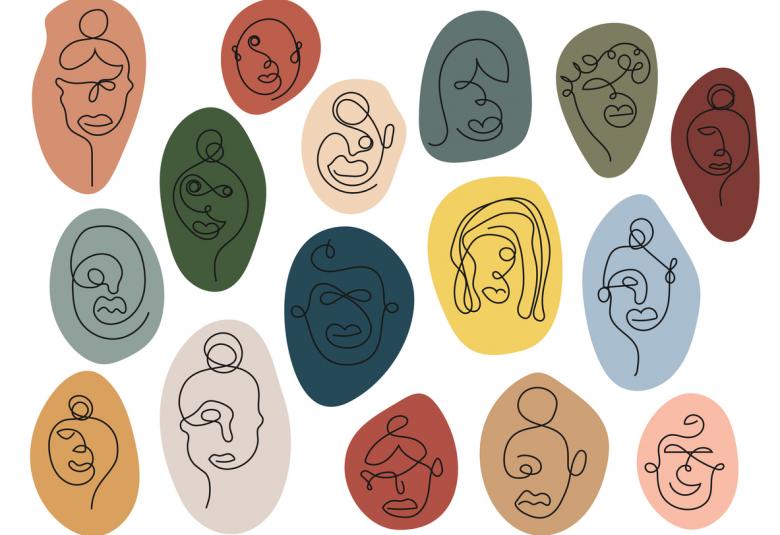IRPB started in strong style with Professor Angst’s presentation on the history and the current research in psychotic symptoms. Surprisingly, these symptoms occur in approximately 28% of the general population, despite their diagnostic rarity.
In a particularly fascinating section of his talk, he demonstrated that the presence of psychotic symptoms could be (reversibly) induced in volunteers through both sensory deprivation and sensory flooding. His suggestion that we exist in a relatively delicate state of balance between taking in too much information and too little is particularly compelling in this age of the internet in every pocket.
The talk was an excellent set-up to the subsequent presentations; establishing the nature and frequency of psychotic symptoms provided a springboard for Professor Coryell and Professor Perugi to discuss their relation to, and impact on, bipolar.
Poles apart In his presentation, The importance of psychotic features to the long-term course of bipolar disorder, Prof. Coryell presented data that showed how the presence of psychotic features was a predictor of the burden of depressive symptoms, but interestingly, their presence was not a significant predictor of the burden of manic symptoms. For Prof. Coryell, this demonstrated the importance of breaking down which syndrome (manic or depressive) the psychotic features present in.
This was a thought-provoking contrast to the core of Prof. Perugi’s presentation, which revolved around the belief that “mixed states are a core manifestation of manic-depression illness, not a specifier”.
Prof. Perugi was not afraid to stake out his position with this explicit dig at the “with mixed features” specifier of DSM-5. Although he recognised DSM-5 as a step in the right direction, he still felt that it did not reflect clinical practice, and may lead to under-diagnosis. In particular, Prof. Perugi believed that DSM-5 does not accurately recognise excitable hypomania symptoms, such as irritability.
“Proper diagnosis of these patients has critical importance for clinical practice”, not only because of the implications for differential diagnosis, but also for the effectiveness of treatment, as some treatment options may even worsen symptoms.
Prof. Perugi left us with a quotation from Doctor Koukopoulos to finish his presentation – “in our opinion, the DSM-5 criteria, as they stand now will leave many patients with mixed depression under-diagnosed” – a strong statement of the need to continue to improve the recognition of the complex nature of bipolar mania.
The matter that makes us all
Following lunch, we trooped in to the Main Hall to hear sessions, themed around neuroimaging and cognitive studies, giving us a chance to learn more about the structural impact of bipolar on the brain.
Doctor McDonald presented data from analyses of imaging studies that showed that bipolar patients have enlargement of both the lateral ventricles and the temporal lobe. Interestingly, the temporal lobe enlargement was most pronounced in patients who had been taking lithium.
However, we also discovered that an increase in size is only part of the answer; bipolar is also associated with a significant reduction in grey matter and, according to Professor Brambilla, a reduction in the complexity of the grey matter as well.
The clinical consequences of these grey matter deficits are not yet clear, but Dr. McDonald concluded that it is a fruitful area for further clinical study.
A lot on the mind
After a stimulating day, your correspondent was left contemplating the notion with which Prof. Angst started his own presentation – the more we learn, the more we find we have to learn.
Of mice, men and models
Professor Einat, Israel gave a thought-provoking talk on how we can build upon and improve existing approaches to modelling bipolar disorder.
The current situation
There has long been a call for improved animal models for bipolar disorder, but this problem is not unique to psychiatric disorders. One of the key aspects holding the field back is a lack of investment in animal models, even though they are the basis for early drug development.
On a more positive note, there are a variety of recent approaches that will help to develop the field, which include:
- New tests for affective-like behaviours
- Targeted mutation models representing reverse translation
- Identification of advantageous strains for components of the disorder
- A search for the most homologous species to address specific human pathways
- Attention to sex
- Separation between responders and non-responders
Mice are not all alike
Prof. Einat noted that different strains of mice are very different from one another. For example, some strains are also more advantageous than others in that some may have better baseline behaviour or a better response profile to drugs. Indeed in even one of the most rudimentary tests – amphetamine-induced hyperactivity – some strains of mice are sensitive to lithium treatment, while some are not. A personal problem lamented by Prof. Einat is that while he would like to use new or better strains, there is only one company that supplies mice in Israel and they have a limited number of strains, which limits his research abilities.
Should we use a nocturnal species to model a diurnal species?
A particularly interesting point for me was that of: Are we using the correct species? While mice and rats are typically used, this is generally because they are highly available and cheap but not necessarily because they are the best species for the study. Indeed, even within the rodent group there are several species to choose from and this must be key consideration for future models.
The most suitable species of rodent is especially pertinent when considering circadian rhythm research. Mice and rats are nocturnal whereas humans are diurnal, and considering our knowledge from circadian rhythm research, this could have a significant effect on outcomes. One study that looked at the effect of photoperiods on affect in diurnal rodents, showed that administering a short photoperiod leads to the development of an anxiety- and depression-like behavioural phenotype. This anxiety/depression could be reversed if the animals were treated with antidepressants, but the rodents responded even more positively if they were treated with bright light. This research just would not have worked in a nocturnal animal, not least because bright light is a stressor to these creatures.
Therefore, these models, in the right type of diurnal animal, could tell us much more about the link between circadian rhythms and affective disorders.
A focus on real-world functioning for patients
While clinical outcomes are naturally a focus, Professor Javed, UK reminded us of the importance of considering functional outcomes in his talk ‘Changing trends in concepts and practice of psychosocial rehabilitation’.
The importance of patient empowerment
The patient’s perceived goals of recovery, rehabilitation and wellbeing are now seen as a vital part of the treatment process, as there has been a shift towards a greater focus on patient empowerment. Therefore, we must consider both measures of real-world functioning and patients’ subjective response to life situations, and also include patients in discussions about functional outcomes.
One of the major issues when considering functioning is that there is no clear definition of functional remission, as there is not complete consensus on the appropriate terminology and standards for the process of functional recovery. This is something that clearly needs further research and clarification.
Assessing functional impairment
Focussing on the functional side may also aid diagnosis and assessment, as asking a patient about their ability to function in daily life might lead to more openness and honesty than simply asking about their psychotic symptoms. Therefore, assessment of function should be a combination of self-reports from the patient, observations from family and carers and an assessment by the clinical team to provide a comprehensive clinical picture.
Following on nicely from this topic, Doctor Torrent, Spain presented some data on functional remediation in bipolar disorder.
How can we reduce impairment for bipolar patients?
Dr Torrent recently conducted a study in patients with bipolar disorder investigating the efficacy of functional remediation, psycho-education and normal treatment.
The psycho-education covered aspects such as illness awareness, therapeutic adherence, avoiding substance abuse, early detection of new episodes and lifestyle regularity. The functional remediation, on the other hand, covered training in cognitive concepts, attention, memory, executive function and enhancing communication. The patient’s family were also included in the process in order to help the patient reinforce these behaviours.
After 6 months, patients who had received functional remediation had a greater reduction in functional impairment scores compared with patients receiving psycho-education or normal treatment. Although data aren’t published yet, the trend looks set to be the same after one year.
These sessions really helped to remind me of the importance of considering the holistic view of the patient. Most people with chronic mental illness continue to have disabling residual symptoms and impaired social functioning, suggesting that psychosocial and psycho-educational interventions are necessary in concurrence with medication. The positive results on functional outcome with functional remediation are certainly interesting and provide a springboard for future research but as always, early intervention will be key to success.
Our correspondent’s highlights from the symposium are meant as a fair representation of the scientific content presented. The views and opinions expressed on this page do not necessarily reflect those of Lundbeck.




